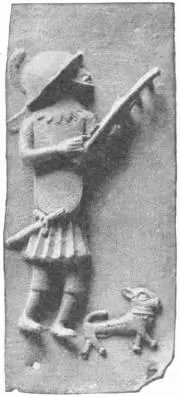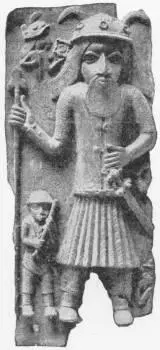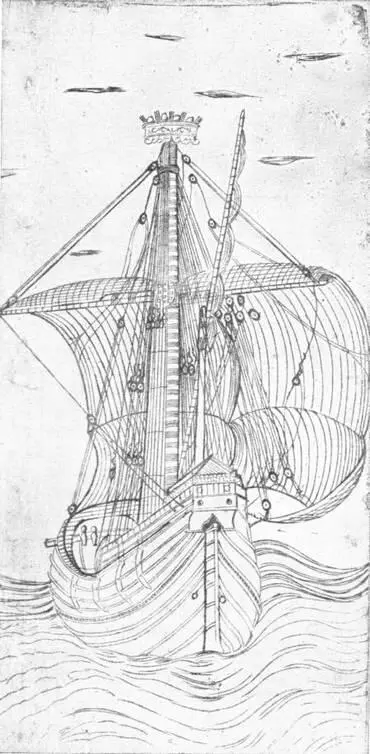Herbert Wells - A Short History of the World
Здесь есть возможность читать онлайн «Herbert Wells - A Short History of the World» весь текст электронной книги совершенно бесплатно (целиком полную версию без сокращений). В некоторых случаях можно слушать аудио, скачать через торрент в формате fb2 и присутствует краткое содержание. Год выпуска: 2011, Жанр: История, на английском языке. Описание произведения, (предисловие) а так же отзывы посетителей доступны на портале библиотеки ЛибКат.
- Название:A Short History of the World
- Автор:
- Жанр:
- Год:2011
- ISBN:нет данных
- Рейтинг книги:4 / 5. Голосов: 1
-
Избранное:Добавить в избранное
- Отзывы:
-
Ваша оценка:
- 80
- 1
- 2
- 3
- 4
- 5
A Short History of the World: краткое содержание, описание и аннотация
Предлагаем к чтению аннотацию, описание, краткое содержание или предисловие (зависит от того, что написал сам автор книги «A Short History of the World»). Если вы не нашли необходимую информацию о книге — напишите в комментариях, мы постараемся отыскать её.
A Short History of the World — читать онлайн бесплатно полную книгу (весь текст) целиком
Ниже представлен текст книги, разбитый по страницам. Система сохранения места последней прочитанной страницы, позволяет с удобством читать онлайн бесплатно книгу «A Short History of the World», без необходимости каждый раз заново искать на чём Вы остановились. Поставьте закладку, и сможете в любой момент перейти на страницу, на которой закончили чтение.
Интервал:
Закладка:
One of the most interesting of these visitors to the Mongol Court was a certain Venetian, Marco Polo, who afterwards set down his story in a book. He went to China about 1272 with his father and uncle, who had already once made the journey. The Great Khan had been deeply impressed by the elder Polos; they were the first men of the “Latin” peoples he had seen; and he sent them back with enquiries for teachers and learned men who could explain Christianity to him, and for various other European things that had aroused his curiosity. Their visit with Marco was their second visit.

ANCIENT BRONZE FIGURE FROM BENIN, W. AFRICA
Note evidence in attire of knowledge of early European explorers
(In the British Museum)
The three Polos started by way of Palestine and not by the Crimea, as in their previous expedition. They had with them a gold tablet and other indications from the Great Khan that must have greatly facilitated their journey. The Great Khan had asked for some oil from the lamp that burns in the Holy Sepulchre at Jerusalem; and so thither they first went, and then by way of Cilicia into Armenia. They went thus far north because the Sultan of Egypt was raiding the Mongol domains at this time. Thence they came by way of Mesopotamia to Ormuz on the Persian Gulf, as if they contemplated a sea voyage. At Ormuz they met merchants from India. For some reason they did not take ship, but instead turned northward through the Persian deserts, and so by way of Balkh over the Pamir to Kashgar, and by way of Kotan and the Lob Nor into the Hwang-ho valley and on to Pekin. At Pekin was the Great Khan, and they were hospitably entertained.

ANOTHER ANCIENT NEGRO BRONZE OF A EUROPEAN
(In the British Museum)
Marco particularly pleased Kublai; he was young and clever, and it is clear he had mastered the Tartar language very thoroughly. He was given an official position and sent on several missions, chiefly in south-west China. The tale he had to tell of vast stretches of smiling and prosperous country, “all the way excellent hostelries for travellers,” and “fine vineyards, fields, and gardens,” of “many abbeys” of Buddhist monks, of manufactures of “cloth of silk and gold and many fine taffetas,” a “constant succession of cities and boroughs,” and so on, first roused the incredulity and then fired the imagination of all Europe. He told of Burmah, and of its great armies with hundreds of elephants, and how these animals were defeated by the Mongol bowmen, and also of the Mongol conquest of Pegu. He told of Japan, and greatly exaggerated the amount of gold in that country. For three years Marco ruled the city of Yang-chow as governor, and he probably impressed the Chinese inhabitants as being little more of a foreigner than any Tartar would have been. He may also have been sent on a mission to India. Chinese records mention a certain Polo attached to the imperial council in 1277, a very valuable confirmation of the general truth of the Polo story.
The publication of Marco Polo’s travels produced a profound effect upon the European imagination. The European literature, and especially the European romance of the fifteenth century, echoes with the names in Marco Polo’s story, with Cathay (North China) and Cambulac (Pekin) and the like.

EARLY ITALIAN ENGRAVING OF A SAILING SHIP
(In the British Museum)
Two centuries later, among the readers of the Travels of Marco Polo was a certain Genoese mariner, Christopher Columbus, who conceived the brilliant idea of sailing westward round the world to China. In Seville there is a copy of the Travels with marginal notes by Columbus. There were many reasons why the thought of a Genoese should be turned in this direction. Until its capture by the Turks in 1453 Constantinople had been an impartial trading mart between the Western world and the East, and the Genoese had traded there freely. But the “Latin” Venetians, the bitter rivals of the Genoese, had been the allies and helpers of the Turks against the Greeks, and with the coming of the Turks Constantinople turned an unfriendly face upon Genoese trade. The long forgotten discovery that the world was round had gradually resumed its sway over men’s minds. The idea of going westward to China was therefore a fairly obvious one. It was encouraged by two things. The mariner’s compass had now been invented and men were no longer left to the mercy of a fine night and the stars to determine the direction in which they were sailing, and the Normans, Catalonians and Genoese and Portuguese had already pushed out into the Atlantic as far as the Canary Isles, Madeira and the Azores.
Yet Columbus found many difficulties before he could get ships to put his idea to the test. He went from one European Court to another. Finally at Granada, just won from the Moors, he secured the patronage of Ferdinand and Isabella, and was able to set out across the unknown ocean in three small ships. After a voyage of two months and nine days he came to a land which he believed to be India, but which was really a new continent, whose distinct existence the old world had never hitherto suspected. He returned to Spain with gold, cotton, strange beasts and birds, and two wild- eyed painted Indians to be baptized. They were called Indians because, to the end of his days, he believed that this land he had found was India. Only in the course of several years did men begin to realize that the whole new continent of America was added to the world’s resources.
The success of Columbus stimulated overseas enterprise enormously. In 1497 the Portuguese sailed round Africa to India, and in 1515 there were Portuguese ships in Java. In 1519 Magellan, a Portuguese sailor in Spanish employment, sailed out of Seville westward with five ships, of which one, the Vittoria , came back up the river to Seville in 1522, the first ship that had ever circumnavigated the world. Thirty-one men were aboard her, survivors of two-hundred-and- eighty who had started. Magellan himself had been killed in the Philippine Isles.
Printed paper books, a new realization of the round world as a thing altogether attainable, a new vision of strange lands, strange animals and plants, strange manners and customs, discoveries overseas and in the skies and in the ways and materials of life burst upon the European mind. The Greek classics, buried and forgotten for so long, were speedily being printed and studied, and were colouring men’s thoughts with the dreams of Plato and the traditions of an age of republican freedom and dignity. The Roman dominion had first brought law and order to Western Europe, and the Latin Church had restored it; but under both Pagan and Catholic Rome curiosity and innovation were subordinate to and restrained by organization. The reign of the Latin mind was now drawing to an end. Between the thirteenth and the sixteenth century the European Aryans, thanks to the stimulating influence of Semite and Mongol and the rediscovery of the Greek classics, broke away from the Latin tradition and rose again to the intellectual and material leadership of mankind.
L
THE REFORMATION OF THE LATIN CHURCH
THE Latin Church itself was enormously affected by this mental rebirth. It was dismembered; and even the portion that survived was extensively renewed.
Читать дальшеИнтервал:
Закладка:
Похожие книги на «A Short History of the World»
Представляем Вашему вниманию похожие книги на «A Short History of the World» списком для выбора. Мы отобрали схожую по названию и смыслу литературу в надежде предоставить читателям больше вариантов отыскать новые, интересные, ещё непрочитанные произведения.
Обсуждение, отзывы о книге «A Short History of the World» и просто собственные мнения читателей. Оставьте ваши комментарии, напишите, что Вы думаете о произведении, его смысле или главных героях. Укажите что конкретно понравилось, а что нет, и почему Вы так считаете.








